Auto Restorer—Through the Years
During the Past Two Decades We’ve Undergone Many Changes. Yet In Some Ways, We’ve Barely Changed at All.
IN AN ARTICLE titled “Welcome,” that ran in the first issue of this publication 20 years ago, there was the following statement that’s as true today as it was in 1989:
“The highest purpose we can have is to be a forum for restoration information, transferring the accumulated knowledge of active restorers to all of us.”
Further, in discussing the nature of the how-to articles that the publication would carry, the “Welcome” section stated: “What they contain is hard-core information, the details that come only from someone who has done something. It’s one thing to look at a factory workshop manual that casually says to “remove and replace the defective part,” and quite another to be face-to-face with a brake drum that doesn’t want to come off a hub…”
One other statement in that 20-year old article was: “This is your invitation to join us in enjoying our old cars.”
In other words, this publication has evolved over the years but it certainly hasn’t changed in its core values.
And when you think about it, those values are something that should never go out of style.
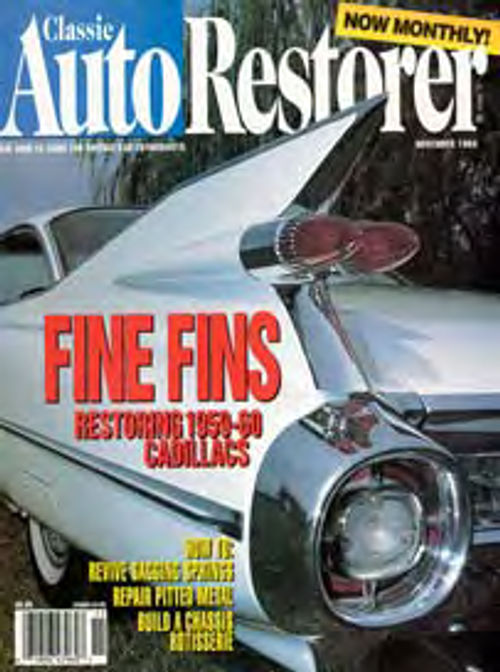
Starting the CAR
As truly long-term readers will recall— and others will note from looking at the image of the first cover at the top of this page—the publication originally was called Classic Auto Restorer. The line under the title read: “The How-To Guide for Vintage Car Enthusiasts.”
That seemed to sum things up fairly well and besides, Classic Auto Restorer could be referred to with the neat acronym “CAR.”
But before too long, we found that along with its benefits, the name had its drawbacks as well.
In essence, it gave us a bit of an identity problem. After all, how many people can you think of who will agree on the definition of a “Classic Auto?”
Some folks will cite definitions formulated by car clubs and say that if the vehicle passes the club’s test, it must be identified as a Classic with a capital “C.” Others say a classic is a vehicle that “stands the test of time,” whatever that might mean, and still others attach the tag to any car that they really, really like, as in “that redesigned Mustang Is an instant classic,” or “the hot new Corvette, no doubt, is a future classic.”
All that aside, however, we also found that numerous people think of the term “classic” as applying only to 1930s vehicles and, therefore, they believed our scope of coverage was limited mainly to cars built during the Depression with a few Model Ts thrown in as well.
So, when the magazine moved from bi-monthly to monthly publication in October 1994, we downsized the word “Classic” and rested it somewhat inconspicuously between the tops of the “A” and “t” in the word “Auto.”
That, of course, raised the question, “Should we just go ahead and change the magazine’s name?” And the answer was, “Not at the moment.”
Then another question was raised, this time regarding “The How-To Guide for Vintage Car Enthusiasts” line on the cover. Once again, semantics was involved. “Just what is a ‘vintage car’ anyway?” people wanted to know. Furthermore, by saying we were a guide for “Vintage Car Enthusiasts,” we were overlooking the fact, on the cover line at least, that many of our readers were enthusiastic about trucks as well. That debate was settled in September 1995 when the magazine became “The How-To Guide for Car & Truck Enthusiasts.”
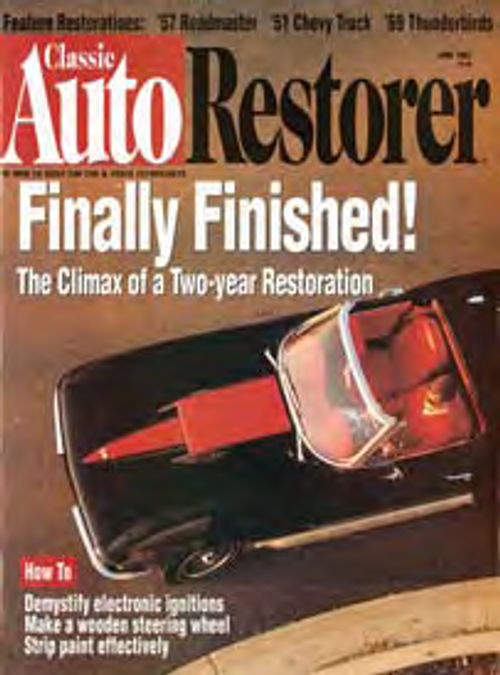
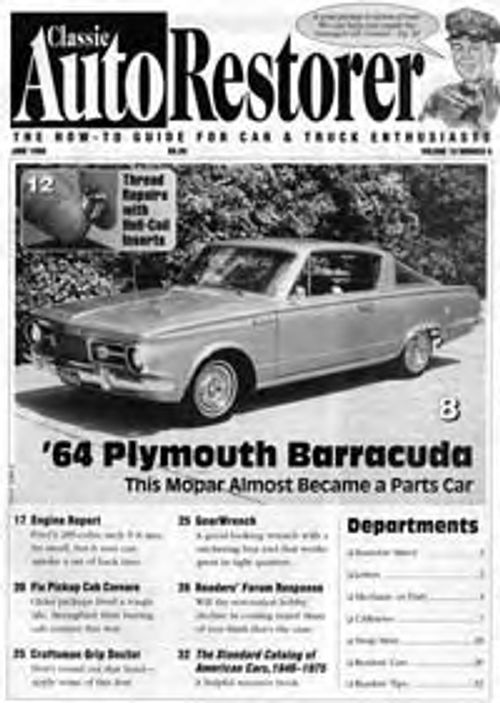
Things Can Be Simply Black & White
As you might expect, while we and our readers debated the magazine’s name and the words on the cover, other developments were taking place as well. Unfortunately, not all of them were favorable to the publication’s health and future status. Revenue, for instance, wasn’t meeting goals and it was becoming obvious that some radical steps were necessary to ensure that CAR would be around to observe future anniversaries.
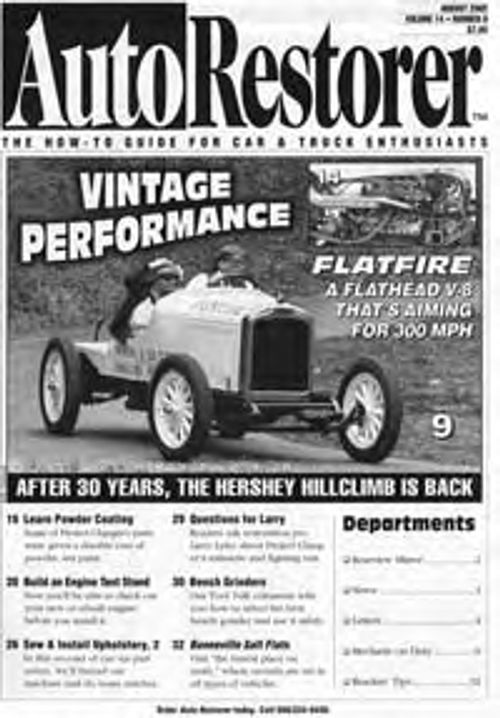
After much discussion, it was decided that advertising, color and some pages would be dropped from the publication.
Our new format was introduced in July 1997. To conserve space, we put the table of contents on the cover and, to add a little interest, we placed a drawing of a retro-looking service station attendant in the upper right-hand corner. Every month he announced an article with the help of a cartoon-like speech balloon and readers began to ask if he was patterned after someone on the staff and if he had a name. The answer to both questions was “no,” he was just a stock illustration that we had managed to nab somewhere.
While readers weren’t happy with the loss of color, and we did lose some subscribers, most of the people said they’d stick with us as long as we continued to supply them with valuable tips and information. Along those lines, one important upside that came with the elimination of advertising was that we were free to endorse or pan any tool, product or service without concern over some advertiser’s reprisals.
Moving From CAR to AR
As we spent time and became more comfortable with our new format, the idea of changing the publication’s name came up again. Accordingly, for the reasons discussed above, we changed the name to Auto Restorer with the January 1999 issue, which marked the beginning of our 10th Anniversary year. Concurrent with the name change, we retired the nameless garage attendant as well.
Sure, we could no longer refer to ourselves as “CAR,” but our new name was truer to what we were all about.
Brought to You In Living Color…
In April 2004 we modernized our logo by switching to a simpler, cleaner-looking typeface, but four years later we had much bigger news to report when we returned to color printing with the March 2008 issue.
Thanks to advances in printing and paper technology, the increased costs of color production were reasonable enough to allow AR to make the switch.
And it came as no surprise when readers approved of the new look.
As one reader put it: “I now remember my disappointment when you decided to go to the BW format, but I continued to subscribe because the info was informative and useful. I agree that some things just didn’t quite work well in BW, and this issue shows what we’ve been missing and proves the point.”
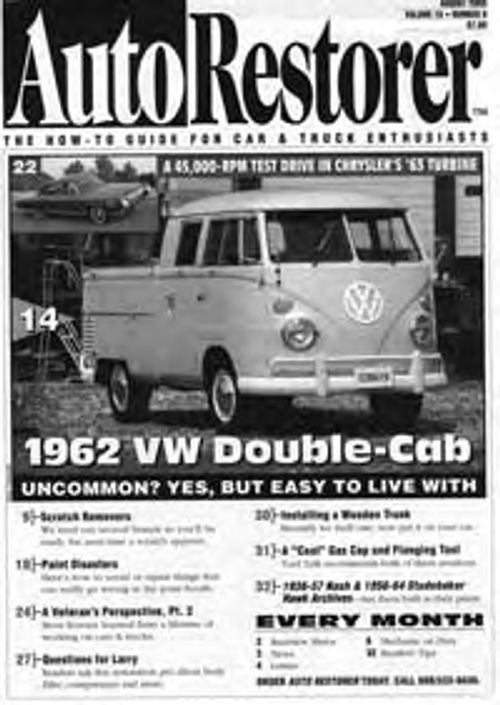
The More Things Change…
Although we’ve had our share of name and format changes over the years, one thing that’s never varied is our basic approach as a “how-to” publication. Even our Feature Restoration articles have to have project information in them and can’t be just “pretty picture” entries.
And if from time to time we tend to stray from our course, readers quickly remind us of our mission. After one uncommon issue that had several articles with little or no how-to content, a reader told us: “I was disappointed. It didn’t make me want to go out to the garage and get my hands dirty.”
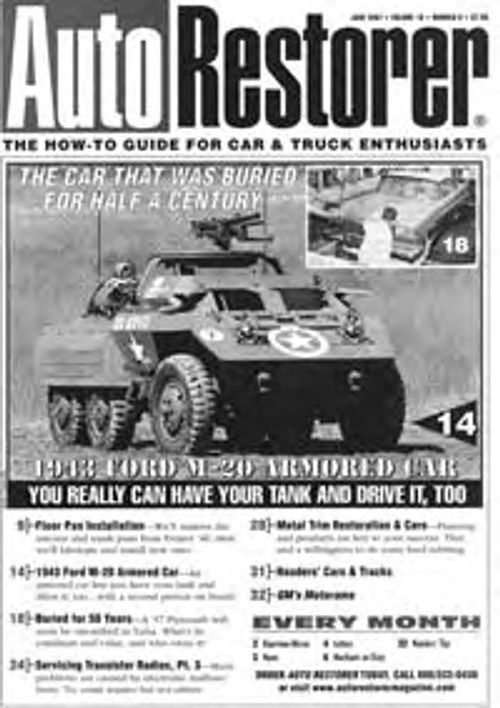
Evolving Topics for Discussion
While how-to material has continued to be the backbone of this publication, the subject matter of these how-to discussions has seen more than a little modification over the years.
Speaking of modification, one of the biggest changes seen here over the past two decades has to do with the type and number of updates that people want for their vehicles. From a time when people had misgivings about putting anything other than factory stock components on their cars and trucks, we’ve now come to a point where requests for information and insight often center on engine and transmission swaps, the installation of disc brakes and dual master cylinders, mounting radial tires on a car that came with bias ply rubber, replacing lap belts with three-point restraints and applying a base coat/clear coat finish to a vehicle that originally wore lacquer or enamel.
Along with those types of updates, we’re also seeing more interest in relatively modern components such as fuel injection, computer controls and CD players that can be hidden or disguised.
The reasons for these trends are twofold. First, some people are hanging onto cars and trucks that they or family members bought new 15 or so years ago. They don’t intend to have the type of regrets felt by so many regarding “the one that got away.” Therefore, they need to become familiar with fuel injection systems, computer controls and other components found on more modern vehicles.
And second, folks who restore an older car or truck generally intend to drive and enjoy their treasure and not just trailer it around. Even if they’re going to a local show, which many readers do, they’d rather drive there and detail the vehicle on arrival instead of towing it to the destination. Using the vehicle means that you not only have to keep up with today’s traffic conditions, you want to feel safe while doing so and that’s where items such as newer engines, disc brakes and three-point belts come into the picture.
Other movement we’ve seen includes a growing interest in the restoration of imported cars, both European and Japanese, which tracks the direction of the entire U.S. car market.
And while most people continue to be interested in conventional cars and trucks, don’t be surprised to see the occasional military vehicle or heavy duty truck on our cover because they tend to have a following as well.
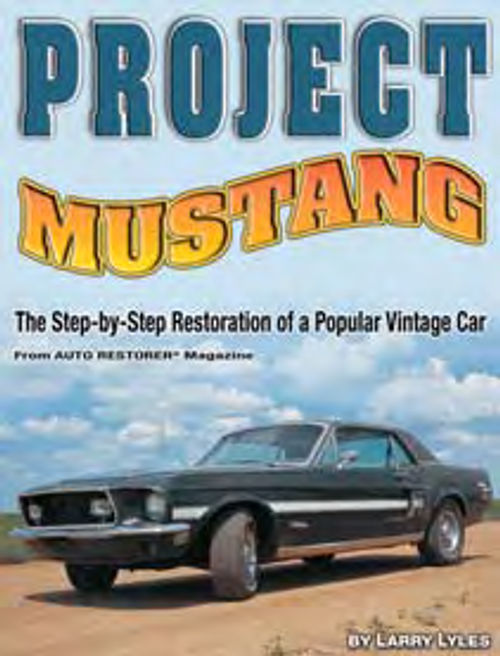
Book ’Em
Another Auto Restorer practice of recent years has been our step-by-step following of project cars from the day they rolled into the shop to the time when they were back out on the streets again. Some of these series have gone for only three or four installments while others, such as those from AR contributor and restoration pro Larry Lyles, have run for as much as two dozen installments. We followed Larry around his shop as he restored his own 1970 Dodge Charger (see page 12 for more on that) and a 1968 Ford Mustang, and while he transformed a badly deteriorated 1946 Ford Business Coupe into a restomod called “Project ’46.” In each case, after the series ran, we gathered up the chapters into book form for those who joined us mid-stream or just wanted the information in a handier form for reference.
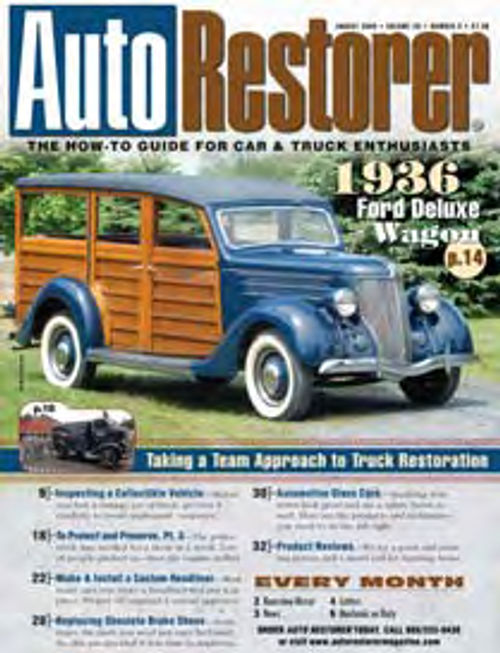
The Road Ahead
Our plans for the future call for evolving just as we have over the past two decades. We’ll listen to our readers and supply them with the information, tips and insight they’re seeking so they can get the maximum enjoyment from their rides.
We’ll also continue to rely on our readers for an ongoing supply of information, tips and insight because right from the earliest days it was understood that Auto Restorer readers possess a trove of knowledge and experience which they’re willing to share with their fellow hobbyists. That doesn’t mean they’ll always be in total agreement with one another and that some spirited debates won’t ensue. But anyone who’s been around cars and trucks for a while knows that there’s generally more than one approach and opinion regarding any project, and that sometimes there can be more than one “right” answer.
For the time being we’ll continue to concentrate mainly on domestic cars and trucks from the ’50s through the ’70s as that’s where most of our readers are concentrated. But that doesn’t mean you won’t see imports, ’80s and ’90s cars and the occasional swoopy ’30s car or horseless carriage as well because we feel that while most people have a favorite vehicle and era in mind, you can learn from and enjoy most anything that has four wheels and an engine. We’re also going to continue to urge readers to encourage younger gearheads to get involved in restoration projects because as we see it, the only way to keep the hobby viable and vibrant is by constantly bringing new people into the fold. And through it all, our approach is going to be informal and, we hope, inviting. As we’ve often said, we look upon this publication as the equivalent of people getting together to swap information and ideas in a garage or driveway…and that’s not the time or place to take yourself too seriously.
So we hope you’ll stick with our group for some time to come, and we’ll go on doing our best to make you want to get your hands dirty.
















